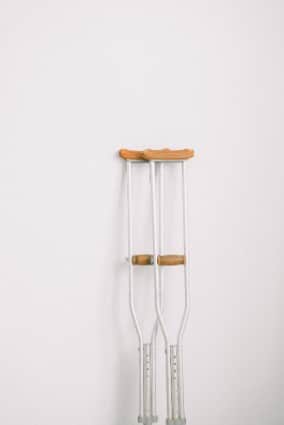
The menisci are cartilaginous discs found in both of your knees, where the thigh and shin bones meet. By absorbing shock and cushioning the knee, the menisci help to support and stabilize the joint. When a meniscus tear occurs, it can result in drastically reduced knee function, with common symptoms including pain and swelling, knee instability and trouble bending/straightening the affected leg. If surgical intervention is recommended to treat a torn meniscus, it is important that the patient learn about restrictions after meniscus surgery which may apply to them. This article will explore possible limitations which one might have while recovering from meniscus surgery.
Restrictions After Meniscus Surgery: What to Expect
In some cases, a meniscus tear may be successfully treated using conservative treatments. In particular, smaller tears and those located on the outer edge of the meniscus are more likely to respond to first-line therapies such as resting, icing and taking medication to relieve pain & swelling.
If a meniscus tear does not improve with conservative treatment, the patient may be advised to consider surgery. Here are some general guidelines on meniscus surgery rehabilitation:
- The length of your recovery and your particular restrictions after meniscus surgery will largely depend on the type of surgery required to heal your knee. If your meniscus tear can be treated with a partial/total meniscectomy (in which part or all of your meniscus is removed), you can expect a shorter recovery time.
- After a meniscectomy, most patients are able to begin bearing weight/walking within a week after surgery. At-home physical therapy exercises are typically recommended, and most patients are approved to resume their normal activities within 4-6 weeks.
- If meniscus repair is necessary, recovery is likely to be longer and more involved. Following this type of meniscus surgery, a knee brace is generally used to stabilize the knee. Typically, keeping weight off the operated knee is a key goal in the weeks following meniscus repair. Thus, you will likely be instructed to use crutches for at least a month after this procedure.
- Physical therapy is another important part of recovery following surgical meniscus repair. Your orthopedic surgeon will provide a timeline for when you should begin physical therapy, which will help to restore range of motion and strengthen your knee.
This outline provides a look at what the meniscus surgery recovery process typically entails. However, it is important to keep in mind that every patient is different. Your recovery time may vary depending on individual factors, including your age and the severity of your knee injury.
Trust Dr. Soffer for Expert, Patient-Focused Knee Care
Do you suspect that you may have sustained a meniscus tear? Seeking professional treatment promptly is vital to speed your recovery. For those located in and around Reading, PA, Dr. Stephen Soffer provides advanced orthopedic care with an emphasis on using the least invasive treatment methods possible.
Among his achievements, Dr. Soffer completed a fellowship in sports medicine with world-renowned sports surgeon Dr. James Andrews. His extensive training and compassionate approach make him qualified to provide the very best surgical and nonsurgical knee care. To schedule an appointment to discuss your treatment options with Dr. Soffer, call our office at 610-375-4949.






